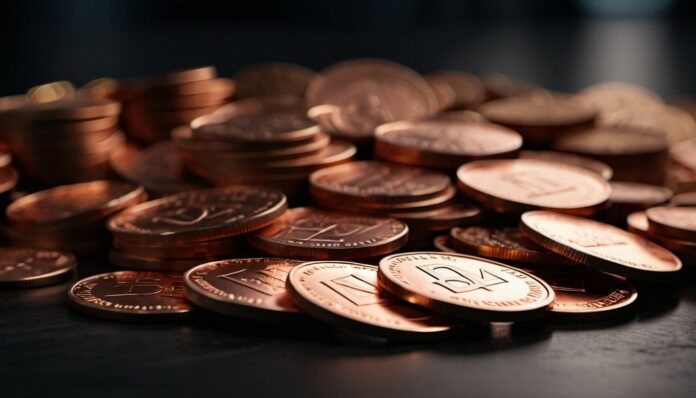Copper is a versatile metal that has been used by humans for thousands of years. It is valued for its conductivity, malleability, and corrosion resistance, making it essential for various applications. From electrical wiring to plumbing pipes and architectural structures, copper plays a vital role in modern society.
Despite its widespread use, copper is also highly recyclable, with much of the world’s copper supply coming from recycled sources.
Interesting Facts About Copper
- Copper is one of the few metals that occurs naturally in a pure form, rather than as an ore.
- The chemical symbol for copper is Cu, derived from the Latin word “cuprum.”
- Copper has been used by humans for over 10,000 years, dating back to the Bronze Age.
- The Statue of Liberty is made of copper, which has turned green over time due to oxidation.
- Copper is essential for the human body, playing a role in enzyme function, nerve transmission, and the formation of red blood cells.
- Copper is a soft metal, making it easy to work with and shape into various forms.
- The largest copper mine in the world is the Escondida mine in Chile, which produces over a million tons of copper annually.
- Copper is commonly used in electrical wiring and circuitry due to its excellent conductivity.
- The ancient Egyptians used copper to sterilize wounds and treat infections due to its antimicrobial properties.
- Copper has been used for coinage in various civilizations throughout history, including the Roman Empire and ancient Greece.
- Copper is highly corrosion-resistant, making it suitable for outdoor applications such as roofing and gutters.
- The Copper Age, also known as the Chalcolithic period, was a transitional phase between the Stone Age and the Bronze Age.
- Copper is an essential nutrient for plants, aiding in photosynthesis and nutrient uptake.
- Copper is commonly alloyed with other metals to improve its strength and durability, such as in bronze and brass.
- Copper is an excellent conductor of heat, making it ideal for cookware and heat exchangers.
- The United States penny, or one-cent coin, is primarily made of copper with a small amount of zinc.
- Copper has been used for artistic purposes throughout history, with examples of copper artwork dating back thousands of years.
- Copper sulfate is a common agricultural pesticide and fungicide used to control pests and diseases in crops.
- Copper is resistant to corrosion in seawater, making it suitable for marine applications such as shipbuilding and offshore structures.
- The process of extracting copper from its ore involves crushing, grinding, and smelting the ore to remove impurities and extract the metal.
- Copper is one of the oldest known metals used by humans, predating the use of iron and steel.
- Copper has antimicrobial properties that make it useful for medical applications such as catheters and surgical instruments.
- Copper is a vital component of many industrial processes, including electronics manufacturing, construction, and transportation.
- The discovery of copper smelting revolutionized human civilization by enabling the production of tools, weapons, and implements from metal.
- Copper has a distinctive reddish-orange color that sets it apart from other metals, making it highly sought after for decorative purposes.
- Copper is a key component of many renewable energy technologies, including solar panels, wind turbines, and electric vehicles.
- Copper wire is commonly used in telecommunications and networking cables due to its high conductivity and reliability.
- Copper is an essential trace element for animals, playing a role in enzyme function, connective tissue formation, and iron metabolism.
- Copper is highly ductile and can be drawn into thin wires or hammered into thin sheets without breaking.
- Copper has been associated with wealth and prestige throughout history, with societies valuing it for its rarity and utility.
